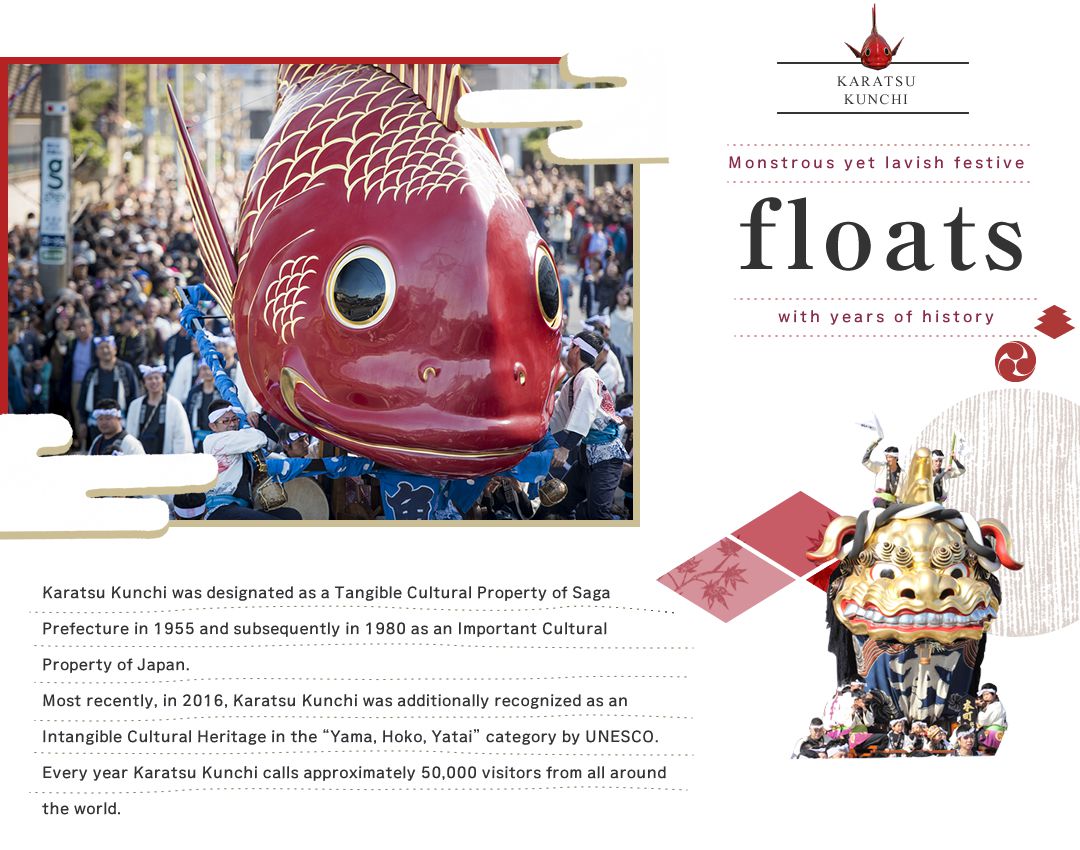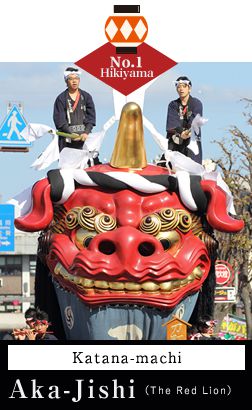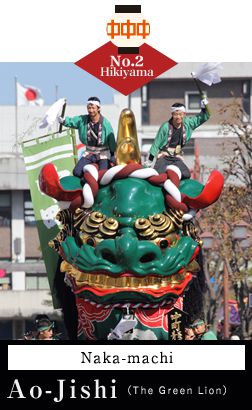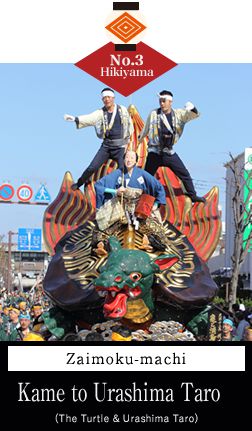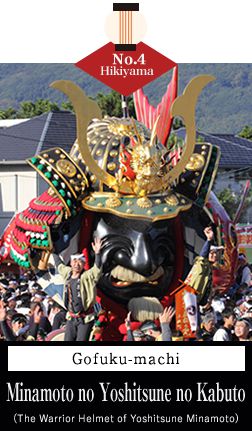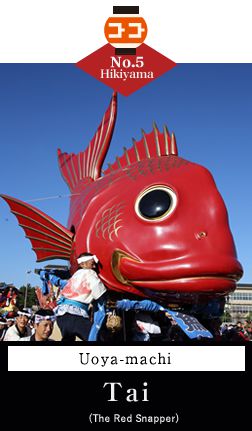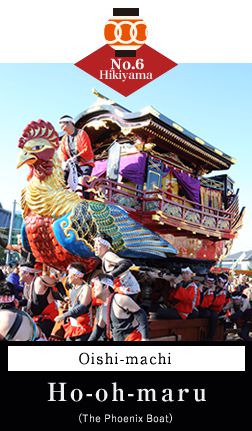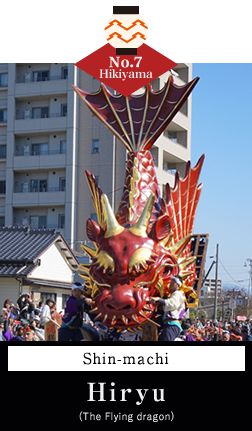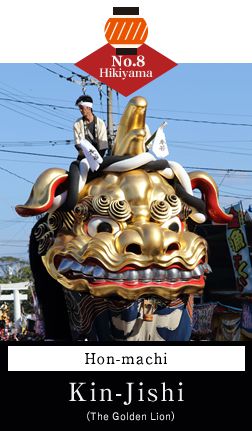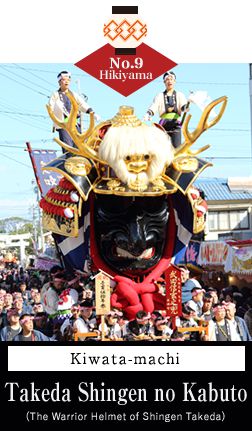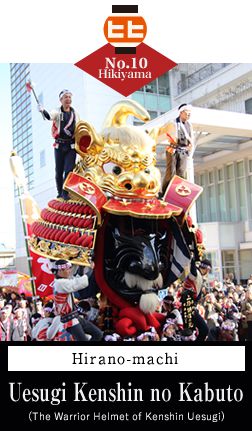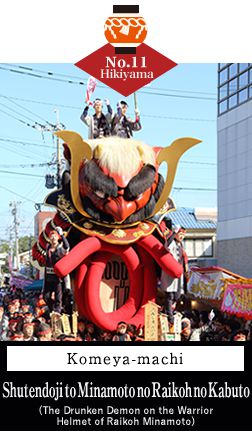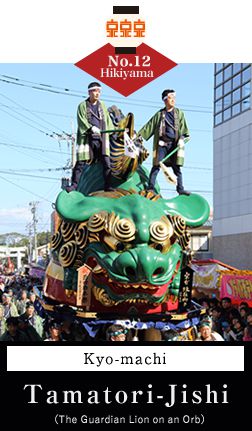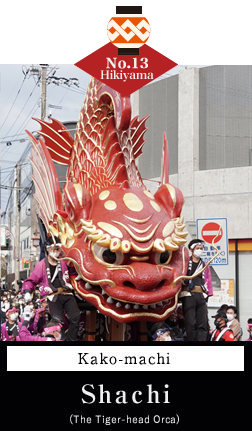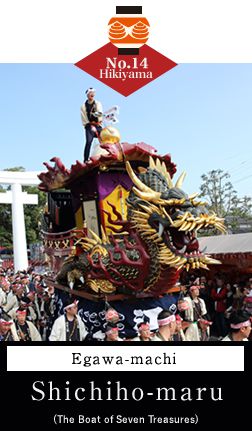

-
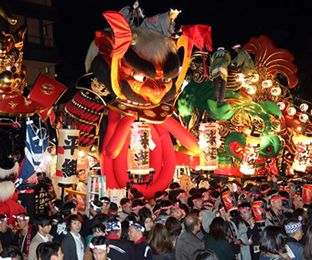

- Two years after the completion of the sando passage leading to Karatsu Shrine, a hikiyama hut was placed along said walkway in 1895. Ever since then, all the hikiyama floats started to gather in front of it just the night before the day of the main event.
Up until that time, each representative district followed its own route through the night - some through the Otemon gate, or some through Meiji and then into Karatsu Shrine for the finale. The collective hikiyama march of today was started in 1962. At first, the hikiyama float representing Katanamachi makes its way east at around 7:30pm, while all the other ones start to join one another from the closest to the farthest. They all eventually gather together in front of Karatsu Shrine, as they wow the crowd of spectators with the overwhelmingly stunning and mystical presence they possess.
-
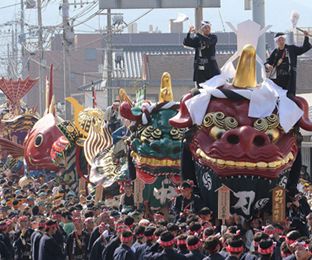

- Highlight of Kunchi Festival, Hikikomi, continues to draw tens and thousands of spectators from in and out of Saga every year. In the morning of the 3rd, young men from the Koda district with deep ties with Karatsu Shrine would present Shinto ritual performances of lion dance at the altar. The nickname “kabu-kabu” lion derives from a Japanese onomatopoeia emulating the sound and the movement of the lion’s mouth. All the participating festival floats line up around the main portable shrine at around 9:30am, as they get ready to march down to the otabisho in Nishinohama. The floats march the streets of the former castle town from the oldest to the newest - Katanamachi red lion leading off the pack all the way down ending up with the 14th, Egawamachi shippou-maru. The highlight of the event is this march to the otabisho, also known as “hikikomi and hikidashi.”
-
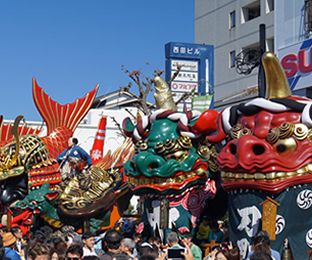

- The final day of the festivity is another 8 km-procession through the old castle town. But this time, it’s without the portable shrine from the previous day. People of each respective district will dress up in their matching towels, vests, pants, and arm gloves. It’s an emotionally moving parade with graceful music and rhythm played by accompanists in and on top of their floats. It sets up for the finale as the participants navigate the massive floats while shouting “enya, enya” with the last of their efforts. Such is how each hikiyama returns to the Exhibition Hall to be put away for the year. With Kunchi coming to an end, the city of Karatsu gets ready for another winter season.

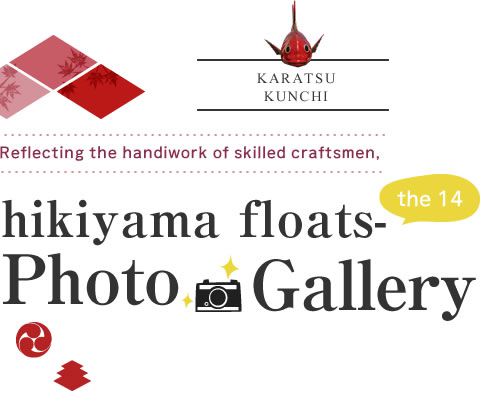
- How meals are served differs home to home. But, the whole-boiled saw-edged perch is worthy of mention. It’s just massive – even the smaller one is over 60cm. The fish is stuffed with daikon radish, boiled eggs, and others in their preference. It’s then slowly boiled in 10 bottles worth of soy sauce and 10 bottles worth of Japanese sake for one whole day.
-
Each home custom-makes their iron ship-like pot in order to accommodate cooking for this oversized dish.
On the day of Kunchi, the locals invite their friends, family, and acquaintances to their homes and welcome them with warm food, sake, and hospitality. Such is the main theme of Karatsu Kunchi – going around house to house and enjoying the original kunchi meal of each home.
One of the best ways to have an access to some of these kunchi meals is “to make friends with people from Karatsu.” -
- Many establishments are closed for the Kunchi season within the city. Arpino next to Karatsu Station will be hosting a local specialty market, making it a perfect spot for a quick rest and gathering information.
- At the end of the final parade, the 14 floats head to the Hikiyama Exhibition Hall to be rested and stored for the year. The floats will be exhibited here. So, if you have missed the parade, take this opportunity and come take a look. (Contact at) 0955-73-4361
©2024 Karatsu Tourism Association.All Rights Reserved.


